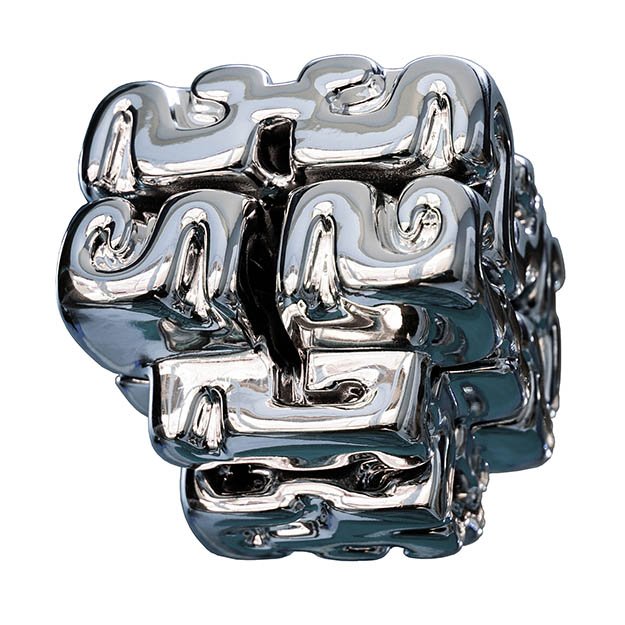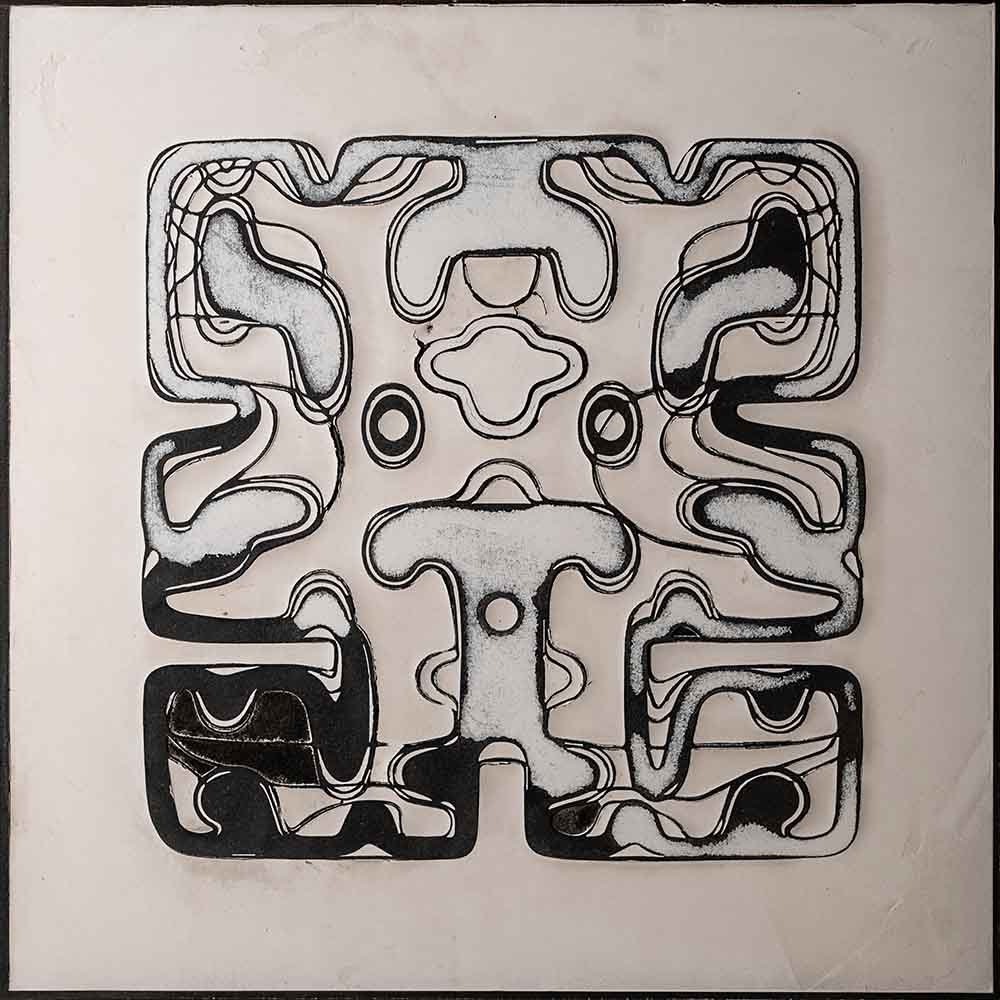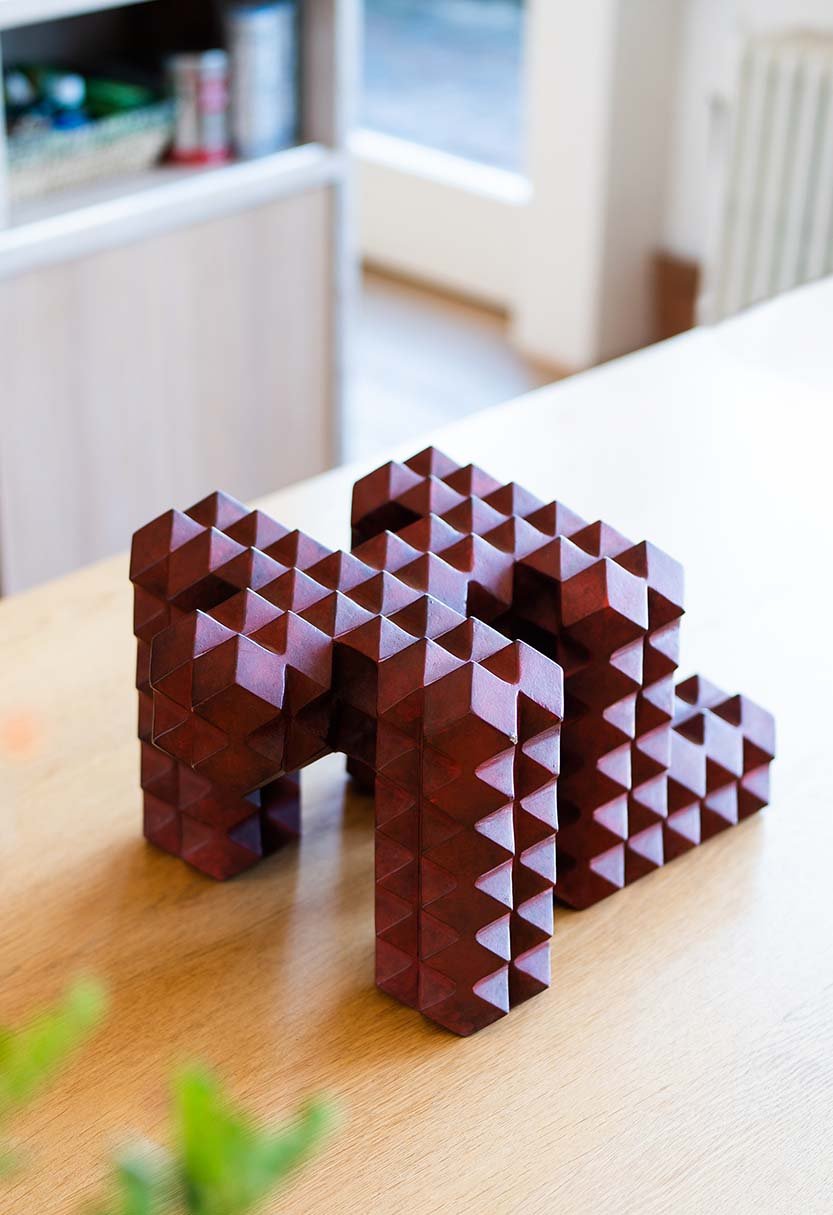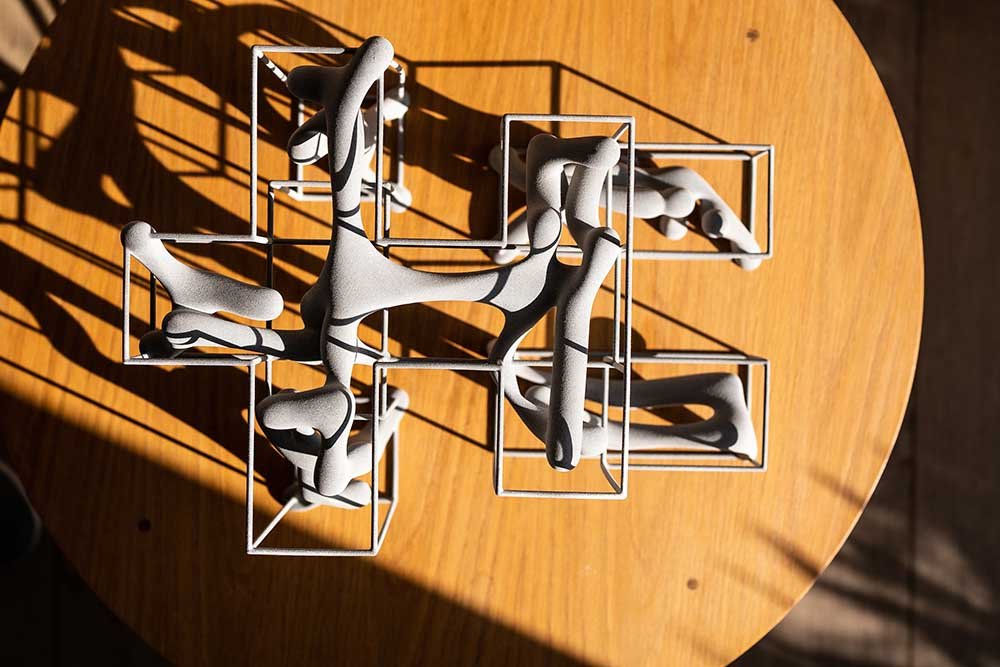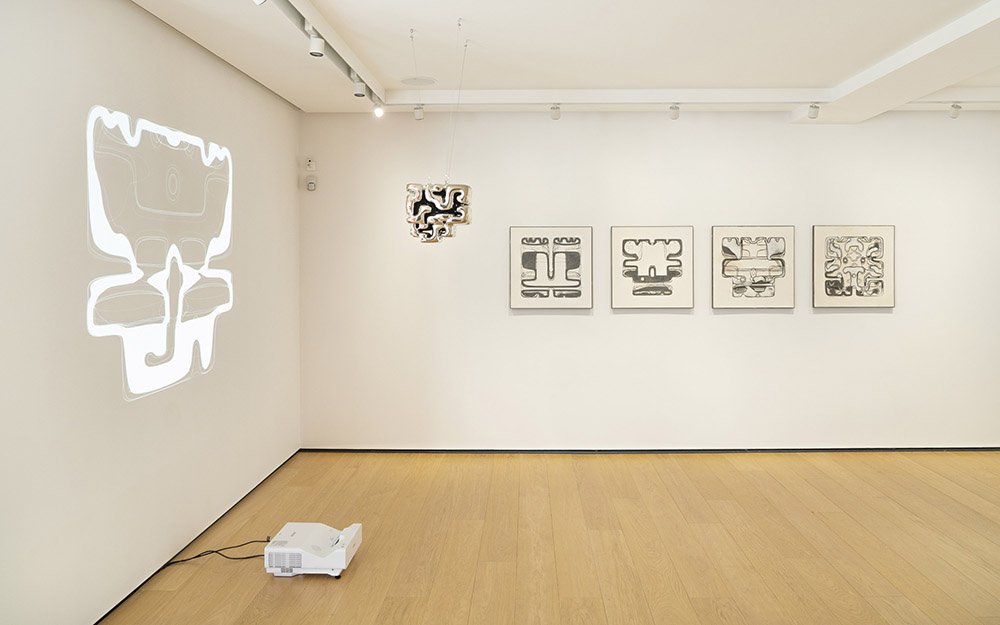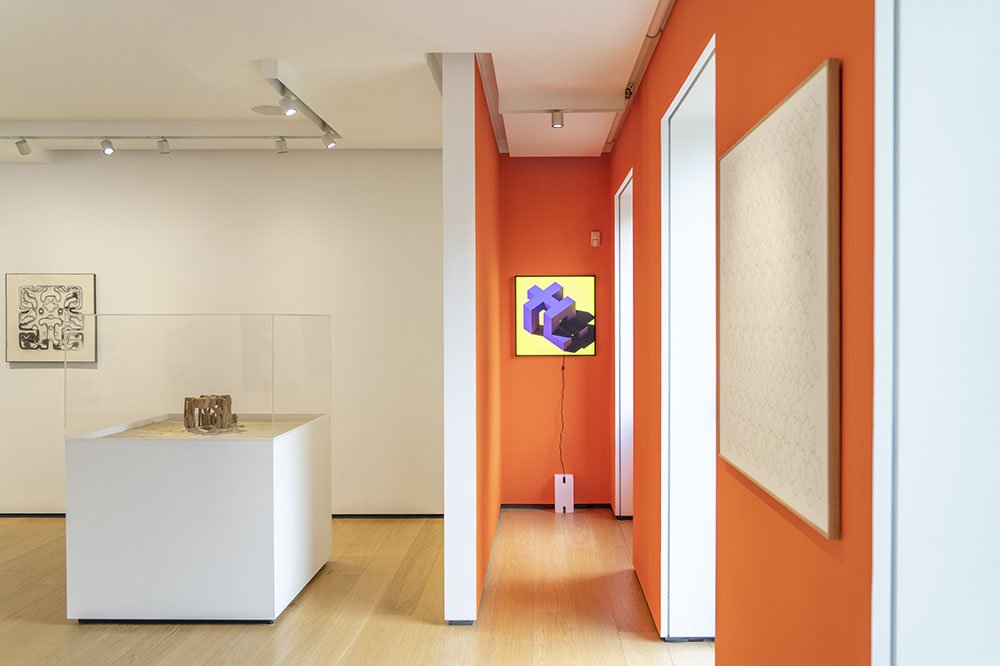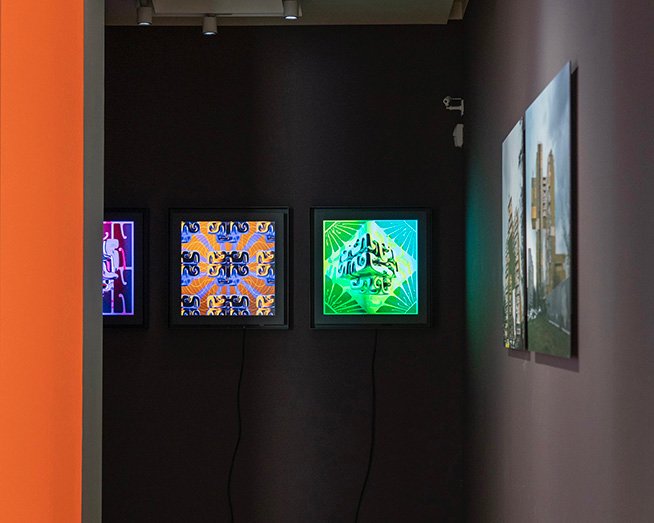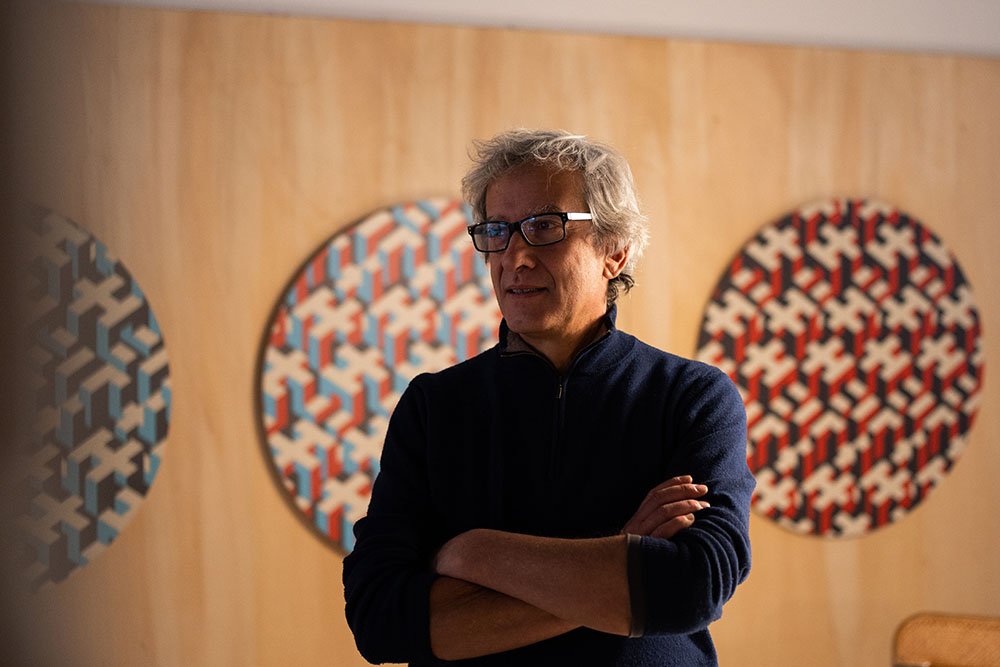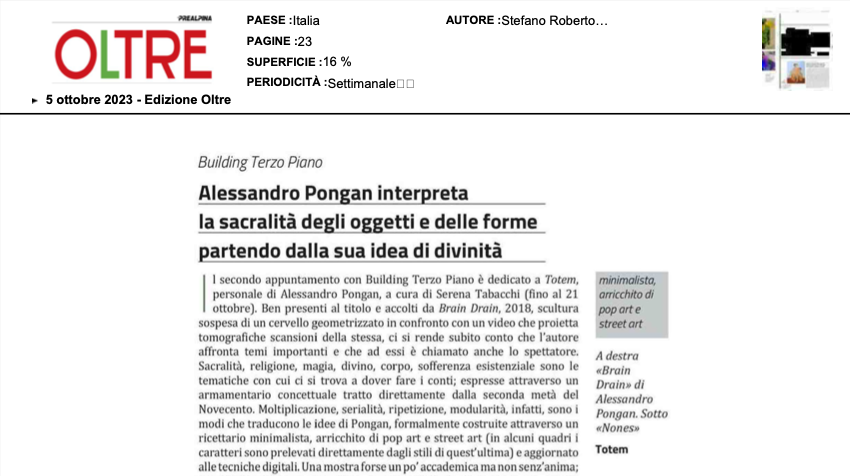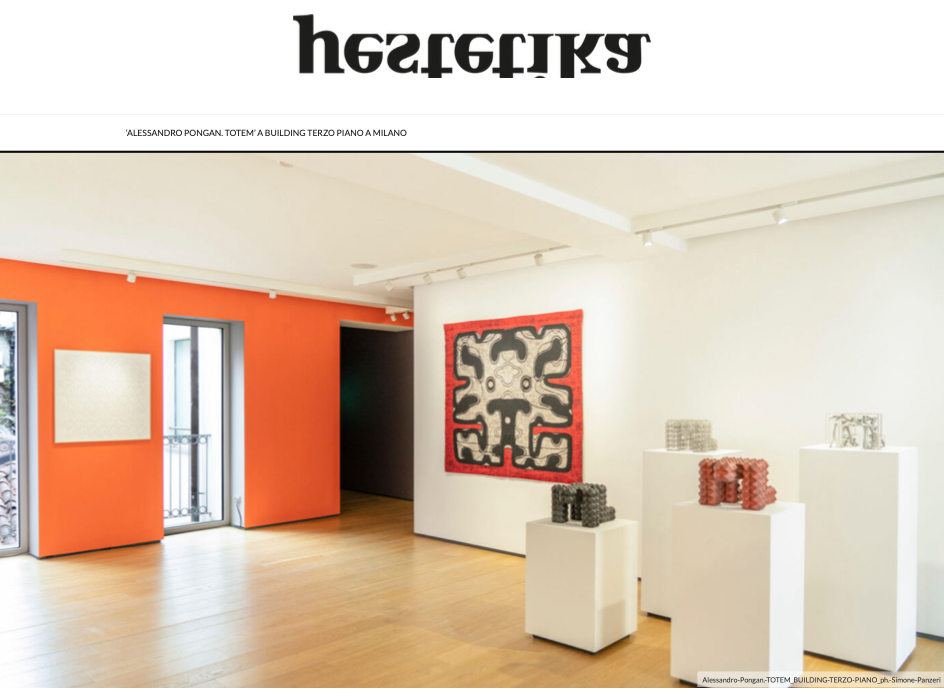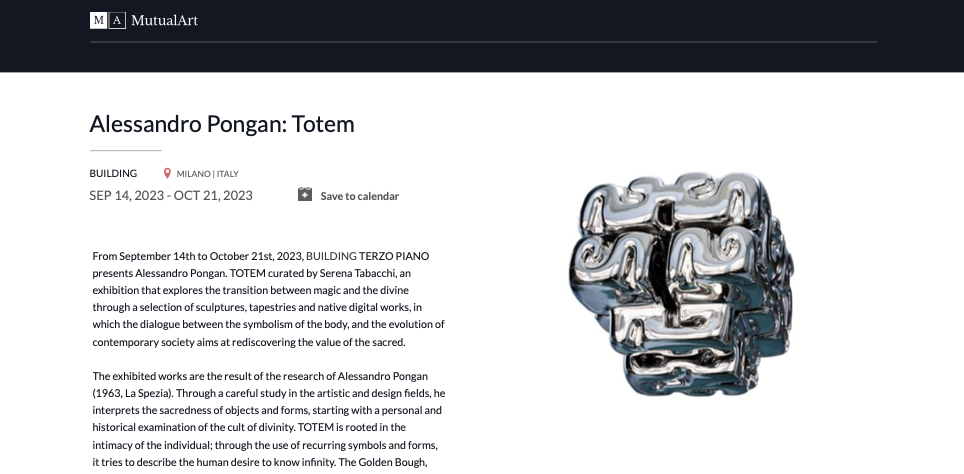Alessandro Pongan. TOTEM
14.09.2023 – 21.10.2023
“The social and material progress of the history of mankind could indeed undermine taboo much less than totemism”.
Sigmund Freud, Totem and Taboo, 1913
From September 14th to October 21st, 2023, BUILDING TERZO PIANO presents Alessandro Pongan. TOTEM curated by Serena Tabacchi, an exhibition that explores the transition between magic and the divine through a selection of sculptures, tapestries and native digital works, in which the dialogue between the symbolism of the body, and the evolution of contemporary society aims at rediscovering the value of the sacred.
The exhibited works are the result of the research of Alessandro Pongan (1963, La Spezia). Through a careful study in the artistic and design fields, he interprets the sacredness of objects and forms, starting with a personal and historical examination of the cult of divinity. TOTEM is rooted in the intimacy of the individual; through the use of recurring symbols and forms, it tries to describe the human desire to know infinity. The Golden Bough, pivotal essay of anthropologist James Frazer’s research, illustrates how magic, which was once part of humankind’s everyday practices, fades with the gradual recognition of the gods and nature as supernatural forces, and therefore superior to esoteric influences. If nature and life events have led us to believe that there is a power greater than our will, the moment the man realizes that the resemblance to his god does not amount to the democratization of nature, but rather to the affirmation of an external but as yet undefined entity that governs the course of creation, this view is opposed by Pongan with a new theory that encapsulates in the totem the transition between votive practice and the embodiment of the sacredness of the body and mind that governs it.
The works displayed at BUILDING TERZO PIANO tell, each through its own medium, the transition from the awareness of the invisible balance of natural forces to internalising it as a form of religion. Pongan created two series characterised by iconic and recurring motifs, such as the Prono [Prone] and Brain Drain cycles. The sculptures of the Prono series are made from metals and resins, after being digitally conceived using a 3D printing system, which can crystallize the highly complex nuances created by the artist on a monitor. The position on all fours is reminiscent of an infant’s first steps, a form of knowledge of the primordial world shared by animals and humans. During growth, it represents resilience, strength, and meditation. The works Human Fabric and Spectrum are also part of the same cycle; the former is a two-dimensional composition of shapers which recalls Rubin vase’s style, where the sequence of Prono creates a monochromatic pattern of human fabric. By contrast, the digital work Spectrum, with its bright and ever-changing colours, explores the possible emotions and connections triggered between the background and the blocks in the foreground, giving a three-dimensional appearance to the Prono, this time through a play of light and shadow. P. Block 67-68 was conceived during a time of isolation, when the Prone became home, as if we wanted to close ourselves in as an act of protection, remaining near despite the concrete of social housing.
The stylised brain appears in the form of a projection and floating sculpture, as if to create a dialogue between the inner self and the material that envelopes it. The four wall-mounted etchings, titled Brain Drain Tales, are made on a wooden support and then filled with plaster before being etched again by hand. Each piece, or story, represents a photographic projection of the cranial box, as to give shape to our feelings.
The hand-woven tapestry by Arazzeria Scassa and the jacquard tapestry are still images of a pattern in the making. Thought, colour and the material are fulfilled in these works: they give a tactile quality to the series.
The three native digital works in the Brain Drain Digital series form a triptych, whichh creates a synergy between the design of the text, which hints at the work’s title, and the plastic colours chosen for each of the perspectives of the Brain presented by the artist. For this series, Pongan relies on an innovative and internationally patented technology that safeguards and protects the work’s file in a unique and therefore nonreplicable DAW® (Digital Art Work) form. Through an encryption system developed by the Italian company Cinello, the works are comparable to unique digital canvases, thanks to which the artist highlights his attention and sensitivity to the issue of authorship of the digital work, and its dissemination as a collectible work in a unique, protected and certified format.



